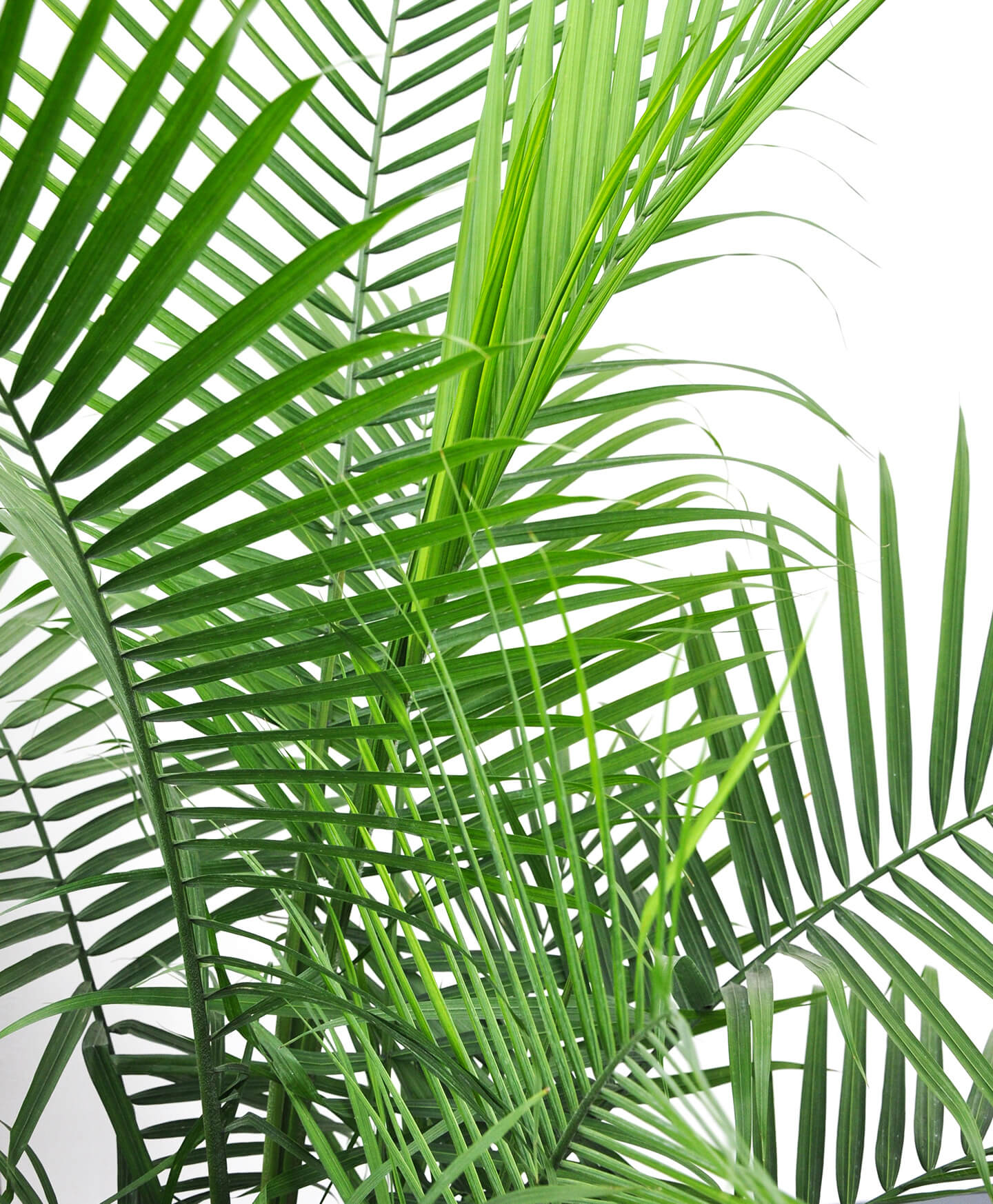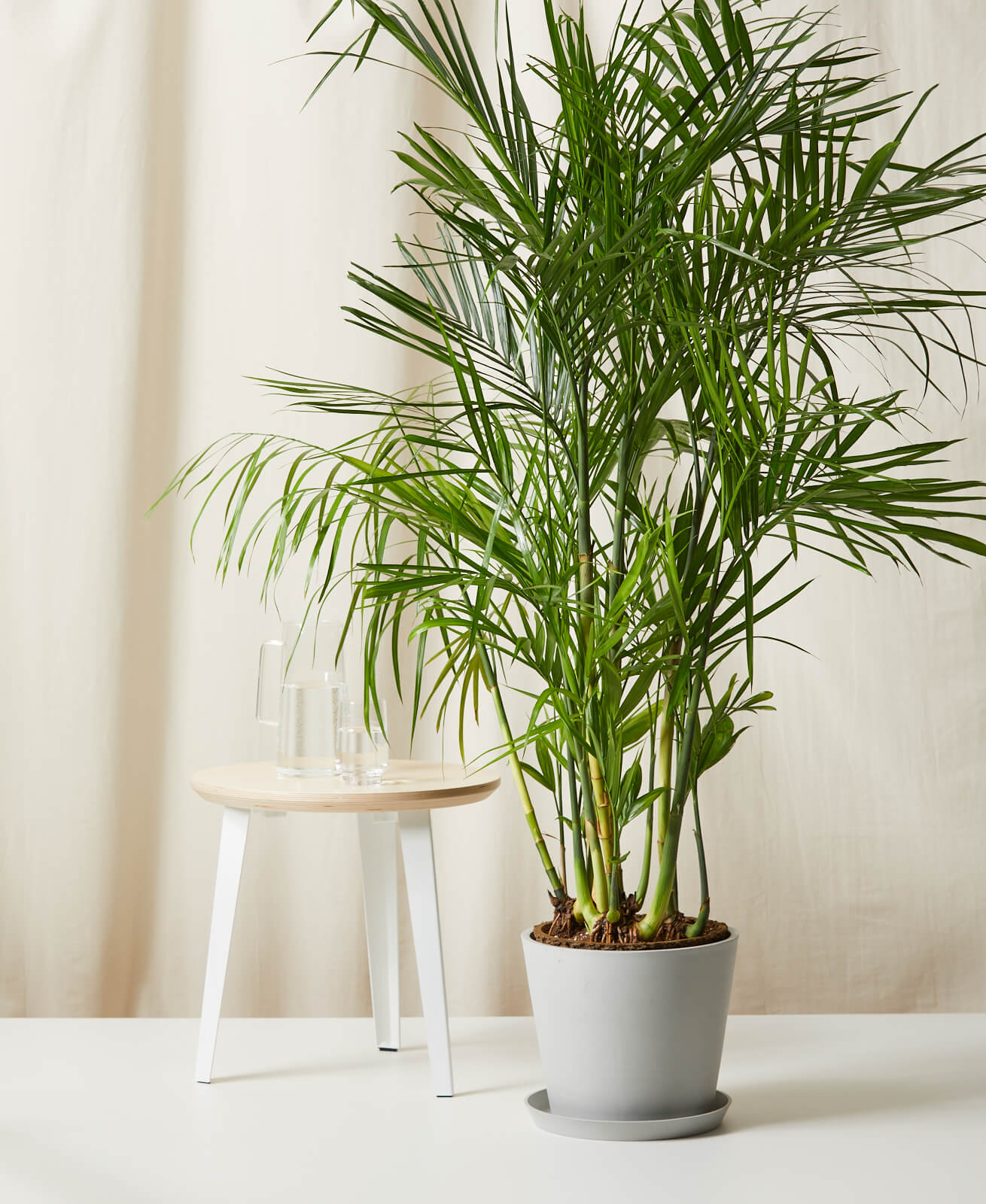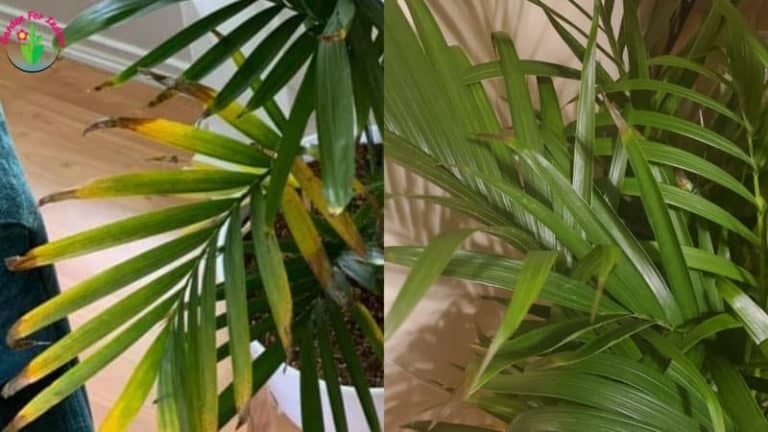Palms are popular and elegant houseplants known for their tropical appeal and graceful, fanning fronds However, palm leaves sometimes turn brown, which can be worrying for plant owners
Browning foliage on an indoor palm is usually indicative of an underlying cultural issue By diagnosing the cause and adjusting care accordingly, you can restore the palm’s health and prevent further leaf damage
Common Causes for Brown Leaves on Indoor Palms
There are several possible reasons why the leaves on your indoor palm may be turning brown
Underwatering
Insufficient watering is the most common cause of browning palm fronds. Palms prefer evenly moist soil and should be watered whenever the top inch becomes dry. Severe underwatering causes the tips of the oldest leaves to turn brown and crispy.
Overwatering
While underwatering browns the tips, overwatering causes brown blotches or streaks on the leaf blades. Excess moisture leads to root rot and inability to take up water. Allow the soil to partly dry out between waterings.
Low Humidity
Palms naturally grow in tropical climates with high humidity. In dry indoor air, the leaf tips and edges turn brown and shrivel up. Mist frequently or use a humidifier to increase humidity around the palm.
Sunburn
Direct hot sunlight will scorch the leaves, especially if the plant isn’t acclimated. Move the palm to filtered light. Trim off any crispy, dried portions.
Cold Drafts
Sudden temperature drops or cold air from vents/windows can shock palms and cause browning damage. Keep palms in warm spots above 60°F (16°C).
Fluoride and Salts
Tap water containing fluoride or excess fertilizer salts causes leaf tip burn. Use distilled or rainwater and flush soil annually to remove accumulated chemicals.
Nutrient Deficiency
Lack of key nutrients like nitrogen causes lower leaves to yellow and turn brown. Apply a balanced liquid fertilizer at half-strength every 2-4 weeks during growth periods.
Pests
Sucking insects such as spider mites, scale, and mealybugs can infest palms, leaving stippling, spots, or browning foliage in their wake. Treat any infestations promptly.
Diseases
Bacterial or fungal diseases often cause spots, lesions, or rapid leaf browning. Improve air flow and isolate affected plants. Apply fungicides as prevention.
Natural Leaf Drop
As old leaves naturally age and die off, they will turn completely brown before dropping from the palm. This is normal as long as new growth is plentiful.
Solutions for Brown Palm Leaves
Once you’ve determined the cause, treatment is focused on correcting care issues:
-
Water more frequently when the top inch of soil becomes dry. Soak until water drains from the bottom. Or water less if soil is continually soggy.
-
Increase ambient humidity through misting, grouping plants, using pebble trays, or running a humidifier.
-
Move palm away from direct light. Acclimate to sunlight over time to avoid burning.
-
Keep palm in temperatures above 60°F (16°C). Avoid cold drafts.
-
Use distilled or rainwater rather than tap water. Flush soil annually to prevent salt buildup.
-
Apply a balanced liquid fertilizer every 2-4 weeks during active growth.
-
Inspect regularly for pests and treat infestations early. Isolate affected plants.
-
Remove diseased or pest-damaged foliage. Improve air circulation. Apply fungicide drenches.
-
Prune off old leaves that have naturally browned. Focus energy on new growth.
With some simple adjustments to your palm’s care, you should see its foliage return to a healthy green within a few weeks. Continued vigilant care will prevent future leaf browning episodes.
When to Worry About Brown Palm Leaves
While some leaf browning is normal, there are certain situations that warrant concern:
Rapid or Widespread Browning
If many leaves quickly turn brown or entire fronds rapidly shrivel, it signals an urgent underlying problem – usually rot, pests, or disease. Severe issues may require replacing the plant.
Browning Despite Proper Care
When you’ve optimized care but the fronds still brown, suspect an incurable pest/disease issue. Propagate healthy stems to start a new plant.
Browning Near the Crown
The newest, unopened fronds turning brown may indicate a fatal problem. Bud rot fungi often invade this part of the palm first.
Wet Brown Spots
Discolored mushy spots that are dark brown or black point to bacteria-caused soft rot invading the palm. This is difficult to treat.
Catching and resolving leaf browning early allows the palm to recover with minimal long term damage. But severe pest issues or rot may mean replacing the plant entirely.
Indoor plants aren’t immune to disease or problems, so tending to leaf browning right away helps ensure the palm returns to health. If you’ve detected brown tips on the leaves of your Palm, here are some reasons why this might be occurring, and some steps to fix it.

Water Frequency
Both too much and too little water will damage palms and will lead to leaf yellowing, and browning.
Most palms prefer to be watered when 50% of their soil volume is dry. Always check the soil before watering to make sure it needs it. Water thoroughly and discard any excess water from the saucer. If you water too often it can lead to yellowing and eventual root rot.
Water Quality
Often, the tips of the leaves will dry out and turn brown, which is called “tipping.” Tap water is usually to blame. It has salts, chlorine, fluoride, and other things that can be bad in large amounts. To prevent this, you can use distilled water or rainwater.
If you see salt buildup on top of the soil as a white crust, you can flush it a few times a year. To do this, take off the top layer of soil and water your Palm slowly but generously with four times the amount of water that fits in the pot. Let the water drain out of the pot and the saucer of any extra water before putting your Palm back where it belongs.
Over-Fertilization
Fertilizer adds nutrients back to the potting soil, but too much of it can turn leaf tips brown and make plants less healthy. Fertilize Palms only when they are actively growing in the spring and summer months. Dormant Palms do not need additional fertilizer. Use a fertilizer formulated for palm trees at the rate recommended on the package. Remember: more fertilizer is not necessarily better. Always fertilize on moist soil as doing so on dry soil can burn the roots.
Cold Injury
Palms require warm temperatures to thrive. While indoor plants are usually kept warm, cold damage can still occur. Place plants in areas away from window and door drafts where cold air can cause leaf tip browning. In the winter, don’t put plants so that their leaves touch the windows. The leaves can freeze and turn brown. In summer, don’t place directly in the path of an air-conditioning vent.
Natural Browning
Palms replace their leaves throughout the growing season. When a palm tree leaf reaches the end of its natural life, it starts to turn brown at the tip and keeps going until the whole leaf turns brown and falls off. If only one or two leaves are turning brown and new leaves keep coming up, the brown tips are normal and nothing to worry about.
Here’s how to properly trim your plant of any brown tips:
- Gather your supplies. A sharp pair of scissors or pruning shears, rubbing alcohol, and paper towels are what you’ll need. (Alcohol wipes that come in a first-aid kit work great!).
- Rub alcohol should be used to clean the cutting edges of your sharp scissors or pruning shears before you start and after each cut. If you only need to get rid of old, dry, or sunburned leaves that are brown and crispy, wet the blades with water before you cut. This will help keep healthy tissue from getting damaged.
- Just cut off any leaves that are brown or yellow at the base, whether they are close to the stem or in the ground. Don’t pull on the leaves; doing so can hurt the plant’s healthy parts. If only a small part of the leaf is brown or yellow, cut off that part.
Important: Be careful not to remove more than 30% of the entire plant while pruning. You may need to prune in stages to avoid removing too many leaves at once.

2 REASONS Your Areca Palm Leaves Turning Brown // Areca Palm Plant Care
FAQ
Should you cut brown leaves off palms?
What does an overwatered indoor palm look like?
How often should you water indoor palms?
- The Ultimate Guide to Growing Strawberries in Raised Beds - August 8, 2025
- No-Dig Garden Beds: The Easiest Way to Grow a Beautiful Garden - August 6, 2025
- How to Protect and Preserve Wood for Raised Garden Beds - August 6, 2025

